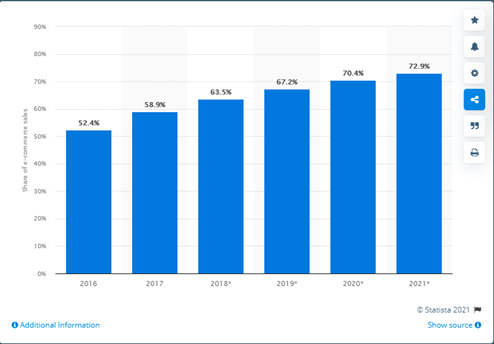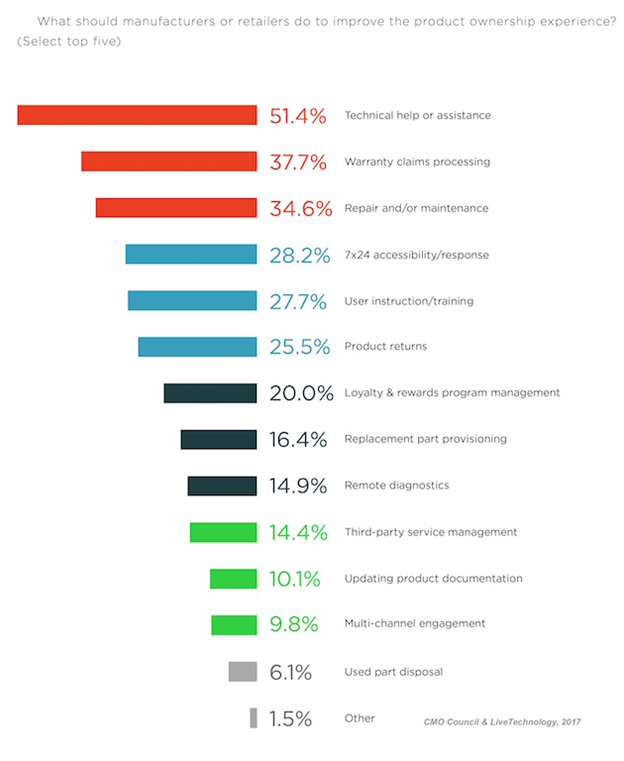Focusing on the Wrong Metrics
Many e-commerce businesses get distracted by the wrong KPIs or metrics that don’t significantly impact your conversion rate. Your page views, impressions, and social media engagement metrics don’t count for much if the better part of your traffic isn’t converting.
While it’s essential you monitor these “big picture” metrics, analyzing your funnel shouldn’t start and finish at the top. It’s important to track metrics that provide insight into real customer journeys to identify possible friction throughout your funnel.
For example, more specific KPIs like visitor-to-subscriber conversion and click-through rates give insight into how customers transition through the funnel. Then, metrics like your email open rates, abandoned cart rates, and conversion rates help identify successes and problem areas.
For example, if your abandoned cart numbers are high (the average is around 70%), you might want to identify the cause. The reason will invariably help you identify friction in the conversion funnel.
Not Optimizing Mobile Experience and Page Load Speed

(Source: Statista)
Mobile e-commerce is on the rise, and eMarketer estimates mobile sources will make up 72.9% of e-commerce sales in 2021 (via Statista). Thus, businesses can’t afford to neglect mobile experiences — every aspect of your e-commerce store should be mobile responsive, period.
Another metric that could be driving up your bounce rates (and hence killing conversions) is your page load times. Google found that the probability of bounce increases by 32% as page load times increase from 1-3 seconds, and your bounce rate worsens as the gap widens. Here’s the full scoop:

Not Using Proven Landing Page Conversion Tactics
Despite pouring hours into devising a conversion campaign through PPC or email marketing, many e-commerce businesses kill their conversion rates with risky landing pages. Although it’s wise to split test landing pages if you have a large enough team to do so, landing pages are not a time to experiment with design.
When designing a landing page, we generally know which tactics work. There’s a great deal of supporting data, and this is not the time to reinvent the wheel. Thus, before committing to a landing page, take the time to research what works in your niche.
In general, some landing page conversion principles to keep in mind are:
- Generally, forms in the upper right-hand side convert better.
- Optimize your copy! Make sure it flows, addresses your prospects’ pain points, connects with your audience, and inspires trust.
- Use high-quality images.
- Don’t forget about mobile, especially for your landing page.
- Include social proof/trust signals because 88% of customers consult them before purchasing.
- Optimize your CTA. For this, you must know the temperature of your audience. Don’t hold back with a soft CTA if your audience is ready to buy. Instead, make it concise and compelling, and be strategic about its positioning (a poorly placed CTA can kill conversions).
- Consider including a video (if appropriate to your niche). Invisia Technologies revealed that a video on your landing page could drive your conversion rate up by 80%.
And after your landing page goes live, keep monitoring your metrics and the page’s performance. If any problem areas materialize, investigate how to optimize them further.
Neglecting Your Post-Purchase Experience
Most e-commerce businesses aren’t providing satisfactory post-purchase experiences, according to how 56% of customers felt about the after-sale services they receive. While this statistic may seem daunting, it means there’s plenty of room for you to outdo your competition by optimizing your post-purchase services.
Improving your post-purchase experience increases customer lifetime values by driving repeat purchases and increasing retention. But, beyond this, it also increases customer advocacy (and 92% of consumers trust recommendations from their friends and family). Improving post-purchase experiences can also enhance your customer acquisition.
But what post-purchase services are customers expecting? The CMO Council and Live Technology surveyed 2,000 consumers to find out. Here are the results:

(Source: MarketingProfs)
Technical help and assistance have a strong lead, so optimizing your customer support offerings is crucial. You might want to include a live chat and hybrid live and chatbot approach to provide consumers with direct support options, mainly because these statistics reveal that customers expect 24/7 support. Having a robust, useful returns policy also plays a role in keeping people happy post-purchase. The more you reduce stress during a return, the better your chances of someone coming back to buy from you again.
Bring It Back to Customers
Conversions are the ultimate goal of your e-commerce brand’s success, but unfortunately, identifying bottlenecks in your funnel can be tricky. If your conversion rates are low, it’s important to vet your funnel at each stage thoroughly. Some not-so-obvious mistakes to look out for include:
- Poor mobile experiences. Given the rapid growth of mobile e-commerce, failing to optimize for mobile can kill your conversion rate.
- Ignoring landing page best practices. E-commerce brands have spent years analyzing landing pages, and the data has shown us what works. You’ll get the best conversion results by sticking to proven tactics.
- Not optimizing your customer support offering and post-purchase experience. Suppose your customers aren’t happy with their post-purchase experience. In that case, they might not buy from you again, and they definitely won’t give you recommendations!
If you find yourself making any of these mistakes, it’s crucial to act and optimize your conversions. Build a journey that customers want to take. Prioritize them and your funnel will not only be more enjoyable but can ultimately lead to greater sales and higher customer lifetime values.
Jake Rheude is the Vice President of Marketing for Red Stag Fulfillment, an e-commerce fulfillment warehouse that was born out of e-commerce. He has years of experience in e-commerce and business development. In his free time, Jake enjoys reading about business and sharing his own experience with others.











